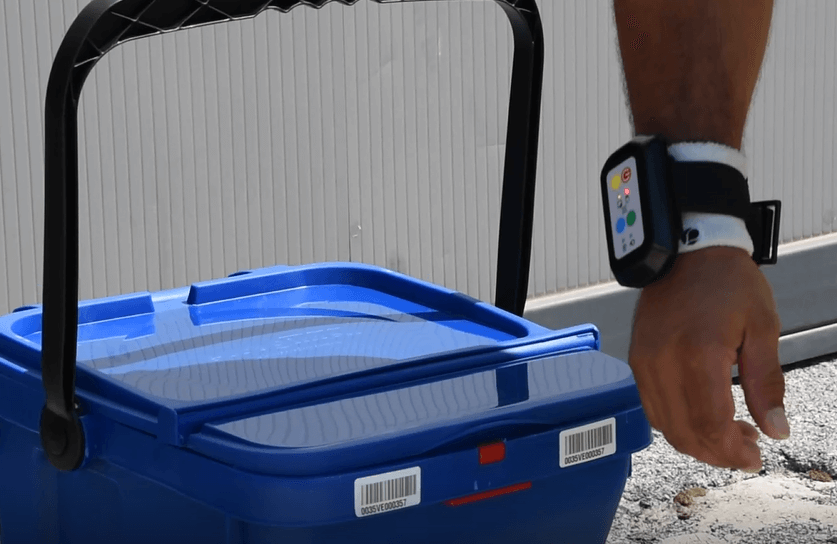In Pay As You Throw waste management, the RFID wearable device is the choice that best meets the needs of municipalities and waste collection companies approaching PAYT tariff.
RFID Pay As You Throw waste management: the requirements of the municipalities and the waste collection companies
Currently, the municipalities that decide to adopt Pay As You Throw waste management can measure the general wastes by identifying and recording the number of times the wheelie bin is emptied or the number of consignments by the user, if a bag is used.
In particular, the number of times the bins are emptied, or consignments, can be measured by a transponder (RFID tag) which is read by a device mounted on the vehicle (antenna) or directly by the operator by means of a wearable reading system.
Factors such as the physical characteristics of the area, the residential density and road conditions influence the choice of the most suitable method: no two municipalities or areas have the same requirements or meet these requirements in the same way. The commonest problems range from organising the work shifts to the number of collections to make, from the type of containers to the preference of a vehicle mounted reader over a wearable one and vice-versa. The only way to find the most suitable method is to experiment, by adopting a flexible technology that allows you to adapt the rfid pay-as-you-throw waste collection process to the characteristics of the area by means of the necessary adjustments when the work is in progress.
Wearable devices are the ideal solution for adopting rfid PAYT waste collection: in fact, the operator reads the RFID tag, which is put indifferently on the bag or bin, through the wearable device. The only required element is to mount the tag on the container. The wearable allows you to set up an experiment in a few days, as well as being completely scalable and repeatable: it is a plug&play technology, which, if the experiment is successful, allows you to update the firmware by adapting it to the customer’s requirements, offering a customised solution based on individual requirements. Once the tests are completed, the method can be easily extended to the whole area, by expanding the device store and making the devices immediately operational.
Vehicle mounted reader or wearable reader?
The main choice to be made for waste collection companies approaching the rfid Pay As You Throw waste collect system is between the vehicle-mounted RFID tag reader and the device that can be worn by the operator. Installing the antenna on the lorry is a costly operation and requires further expenses for maintenance and calibration. Moreover, assembling a hardware directly on the vehicle imposes that a certain type of process terminology be adopted and gives no possibility of updating or adapting, without taking into consideration that the reading, depending on the type of waste collection, can lose up to 10% of the data.
Wearable RFID readers - as Discovery Mobile UHF, for example - have the advantage of considerably less costs, they do not need installation, maintenance or calibration and are not tied to the vehicle, which can wear out or break down. Reading the RFID tag from close up guarantees an accuracy that is difficult to get from other systems, since the device reads a tag number that is exactly the same as the one on the bag or bin - e.g. for 100 bags, 100 tags read and 100 readings sent to the server -. And more, the much reduced reading distance gives a “clean” datum - it is not influenced by other tags in the environment - and it can be integrated with all calculation software.
The waste collection operation includes a set of movements ranging from jumping onto the vehicle to driving for a short section, to jumping off the vehicle to pick up the bag or bin to be emptied. Every change in the work methodology can create difficulties for the operator: the wearable minimises the impact on the waste collection process, because it exploits the naturalness of the movements carried out by the operator without requiring a change of any parameter.
Wearable technology, therefore, is perfect for those who are approaching rfid Pay As You Throw waste management because:
-
it is compatible with every waste collection methodology;
-
it is designed for setting up experiments economically and in a short time;
-
it can be updated on the basis of the customer’s requirements, thanks to plug&play;
-
expanding the device store and making them immediately operational is very simple at the end of the experimenting;
-
using it does not modify the waste collection process carried out by the operator;
-
reading from close up guarantees an accuracy and data cleanness that is difficult to achieve with other systems.


